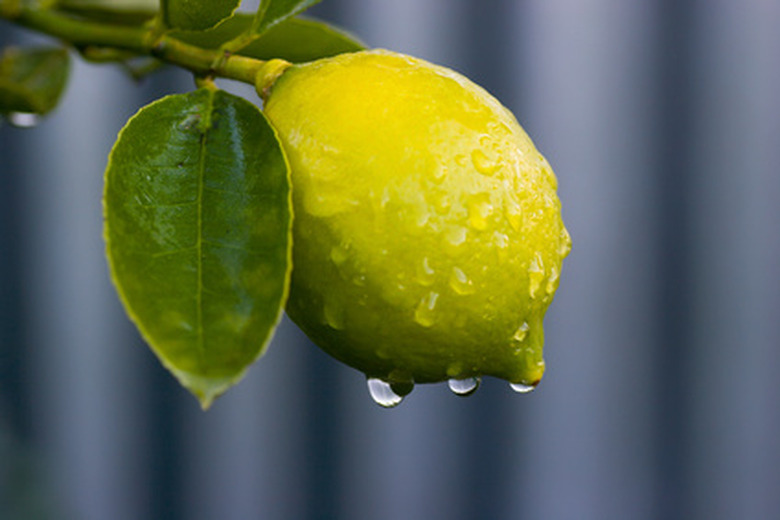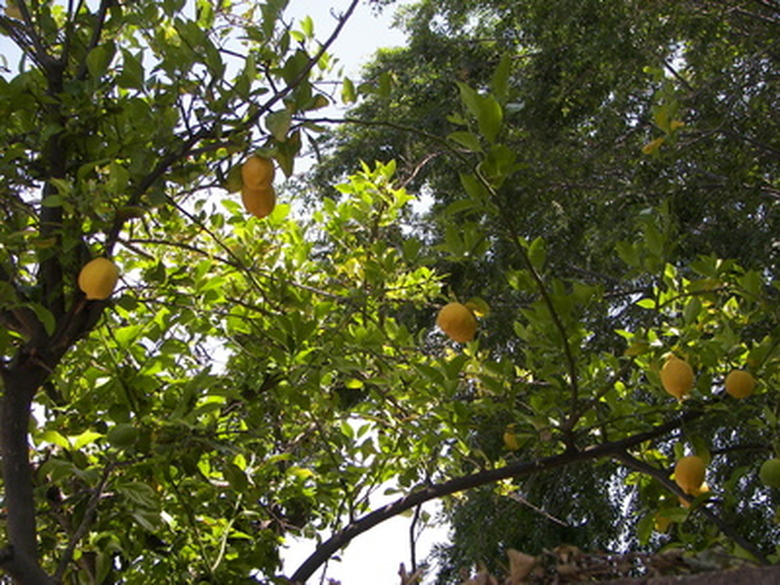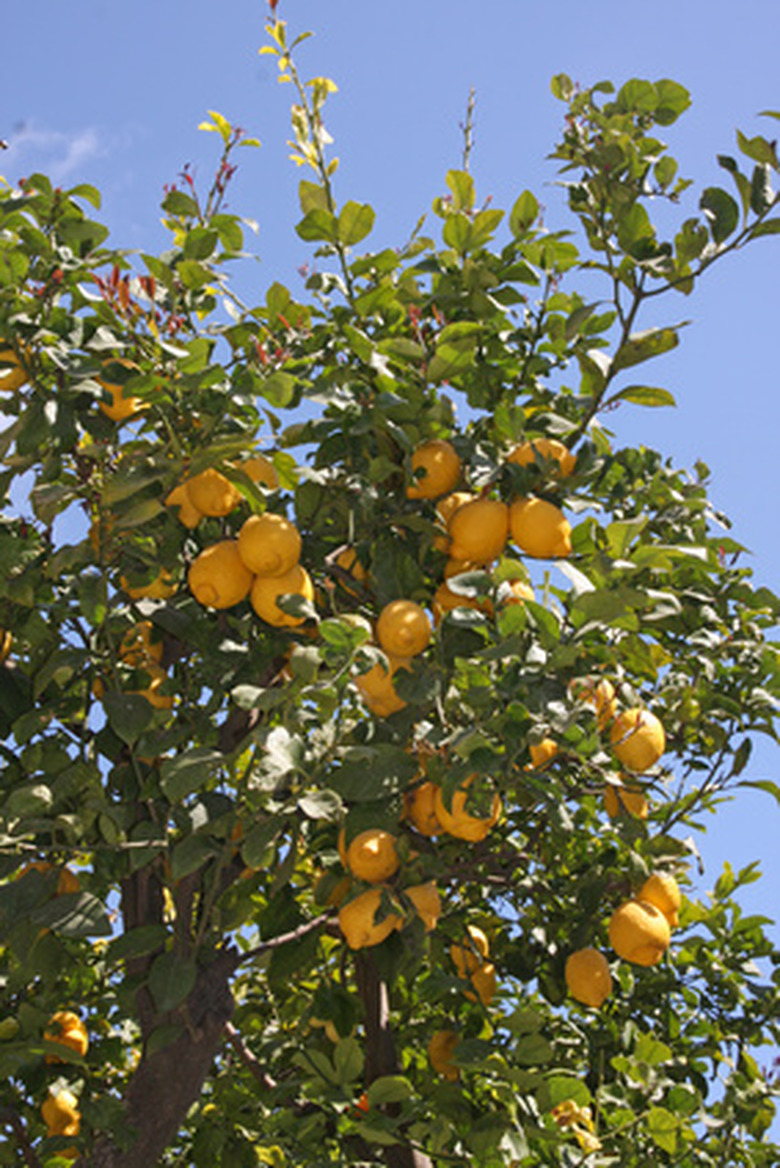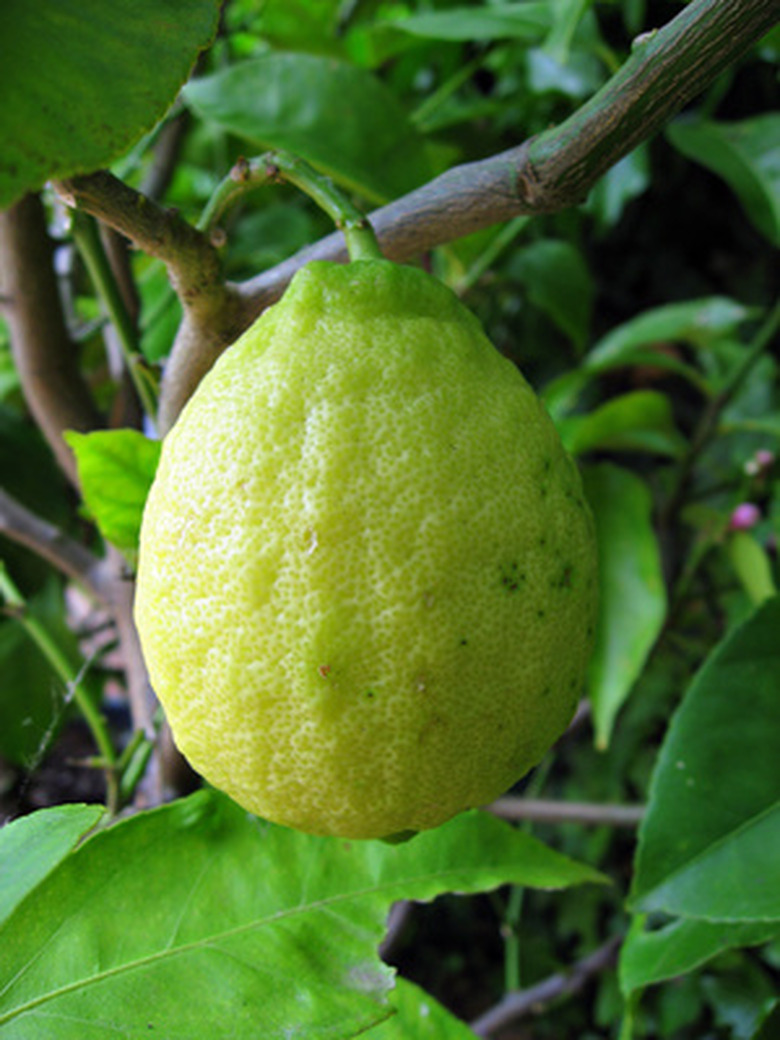How To Identify Types Of Lemon Trees
A common citrus tree, the lemon tree (Citrus limon) grows 10 to 20 feet tall with alternately arranged oblong and elliptical leaves that are reddish when they first emerge and turn dark green in summer. The lemon tree's leaves are usually 2 ½ to 4 ½ inches long with finely toothed edges. The ¾-inch-wide flowers are borne from reddish buds, blooming with four or five petals that are purplish on the outside surfaces and white on the insides. Several different types of lemon trees exist, most of which are distinguished from one another by the characteristics of their fruits.
Step 1
Identify Lisbon lemons by their open, spreading crowns with only a few branches. Lisbon lemons are "true lemons" and have nearly thornless twigs, producing oval yellow fruits with a moderate amount of seeds, acid juices and yellow, smooth rinds.
Step 2
Spot Eureka lemon trees, which are also true lemons, by their dense canopies that have many upright and thorny branches. The Eureka lemon tree also bears typical true lemon fruits, but the lemons are seedier than the Eureka lemons.
- A common citrus tree, the lemon tree (Citrus limon) grows 10 to 20 feet tall with alternately arranged oblong and elliptical leaves that are reddish when they first emerge and turn dark green in summer.
- Lisbon lemons are "true lemons" and have nearly thornless twigs, producing oval yellow fruits with a moderate amount of seeds, acid juices and yellow, smooth rinds.
Step 3
Look for moderately seedy, large orange-sized fruits to identify the Meyer lemon tree. Meyer lemon trees are small with spreading crowns, nearly thornless and produce fruits that are more orange-colored in the rinds and pulp. Meyer lemons are dwarf trees that are hybrids of lemons and mandarin oranges.
Step 4
Spot Ponderosa lemon trees by looking for their small size and thorny stems. The Ponderosa lemon tree produces large, seedy fruits that have yellow, thick and bumpy rinds.
Step 5
Look for characteristics that resemble true lemons to identify rough lemons, but with the distinguishing characteristics of their much larger height and spread. Rough lemon trees produce seedier and larger fruits than true lemons, with less acid juice and irregular, bumpy fruit rinds that are often ribbed and have large oil glands.
- Look for moderately seedy, large orange-sized fruits to identify the Meyer lemon tree.
- Meyer lemon trees are small with spreading crowns, nearly thornless and produce fruits that are more orange-colored in the rinds and pulp.
Step 6
Identify sweet lemons (Citrus limetta Risso) by their non-acidic fruits with white seeds. The sweet lemon tree is large and usually the size of an orange tree.
Tip
The Bearss and Avon lemon tree varieties are similar to the Lisbon lemon tree, while the Harvey, Dorshapo and Villafranca lemon varieties are similar to the Eureka true lemon trees. The Armstrong variety is also similar to the Eureka lemon tree, but it produces seedless or nearly seedless fruits.
Warning
Don't confuse the Eureka with the Lisbon lemon tree. Eureka lemon trees bear their fruits in spring and summer, while the Lisbon produces fruits in summer and autumn.



